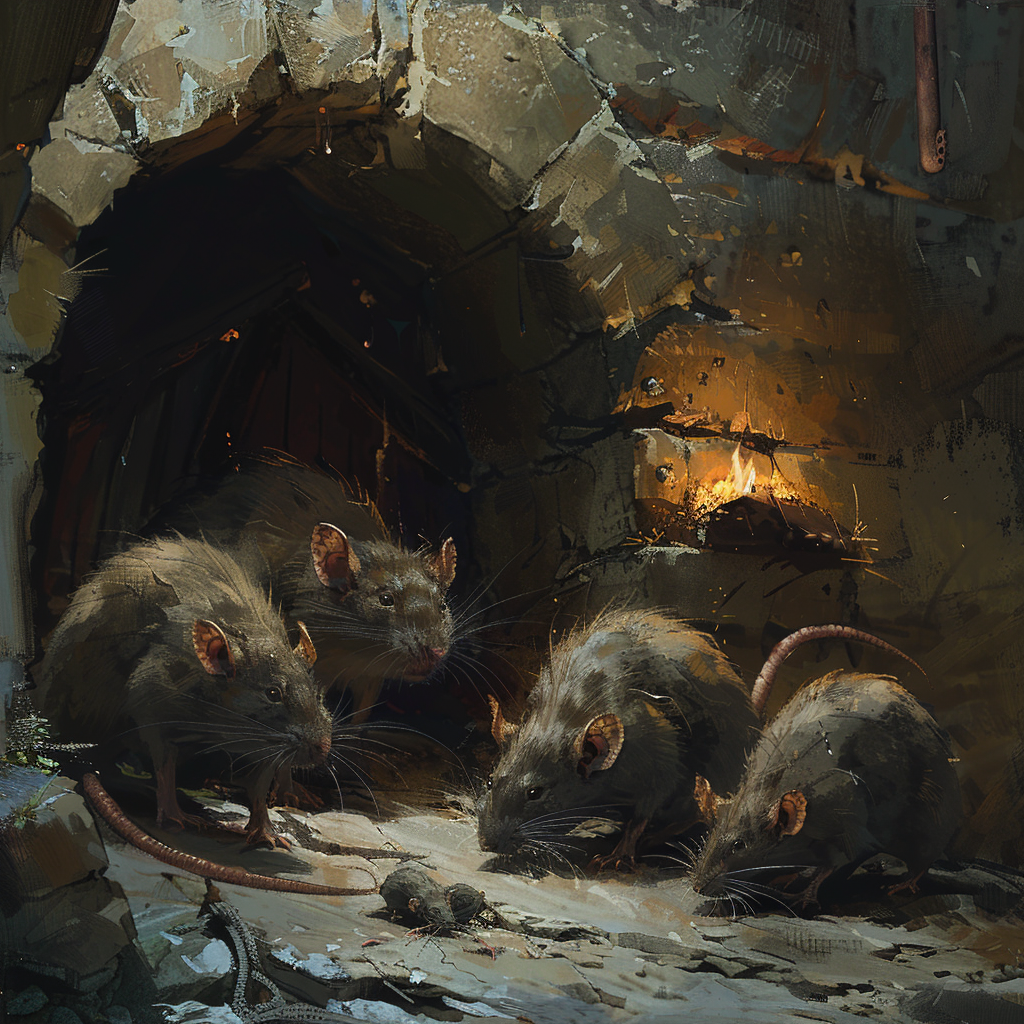Build an Encounter: Reinventing the “Rats in a Cellar” Trope
Introduction
As a Dungeon Master (DM) with over a decade of experience, I’ve seen countless adventurers tackle the infamous “rats in a cellar” encounter. It’s a staple in many campaigns, often used as a simple, low-stakes introduction to combat mechanics. However, this cliche can quickly become mundane if not handled with creativity. Today, I want to share a method to transform this classic scenario into an engaging, strategic, and memorable experience for your players.
The Importance of Reinventing Tropes
Keeping Players Engaged
One of the primary goals of a DM is to keep players engaged and excited about the game. Falling back on overused tropes can diminish the sense of adventure and discovery. By reinventing these scenarios, we can surprise our players and keep the game fresh.
Encouraging Strategic Thinking
Basic encounters often lack the complexity needed to challenge seasoned players. By adding layers of strategy and unique challenges, we encourage players to think critically and work together, enhancing their overall gaming experience.
Creating Memorable Moments
The best sessions are those that players remember and talk about long after the campaign ends. Unique encounters provide these memorable moments, strengthening the bond between players and their characters.
The Reinvented Encounter: The Infested Wine Cellar
Setting the Scene
Our adventure begins in a quaint village, where the local innkeeper approaches the party with a request. His wine cellar has been overrun by an unusually large and aggressive swarm of rats, disrupting his business. However, upon closer inspection, the party will find that this is no ordinary infestation.
The Plot Twist
Unbeknownst to the innkeeper, a minor demon has taken up residence in the cellar. This demon has been summoning and controlling the rats, using them as a cover to conduct dark rituals. The party must not only clear out the rats but also uncover and deal with the demonic presence.

Encounter Breakdown
Step 1: Initial Investigation
When the party first enters the cellar, they are met with a seemingly ordinary rat infestation. Encourage your players to investigate the area thoroughly. Those who do will notice strange symbols etched into the walls and an eerie glow coming from a hidden corner of the cellar.
DM Tip: Describe the cellar in detail, emphasizing the musty smell, the flickering torchlight, and the scurrying sounds. Set the mood to make the players feel uneasy and on edge.
Step 2: The Swarm Attack
As the party delves deeper, they disturb a large swarm of rats. Unlike typical rats, these are larger, more aggressive, and seem to move with unnerving coordination. Use a modified stat block to increase their challenge level, and consider adding abilities such as pack tactics or poison bites.
DM Tip: Instead of a straightforward combat, create environmental hazards like unstable wine racks or slippery floors. This forces players to think about their positioning and movement.
Step 3: Uncovering the Demon
Once the rats are dealt with, the party discovers a hidden chamber behind a false wall. Inside, they find the minor demon performing a ritual. The demon is weakened but still poses a significant threat. It can summon more rats and cast minor spells to hinder the party.
DM Tip: Use the demon’s summoning ability to keep the pressure on the players. Summoning reinforcements forces them to prioritize targets and manage their resources effectively.
Step 4: The Ritual’s Consequences
If the demon completes its ritual, it will summon a larger threat, such as a shadowy figure or a cursed artifact. The party must interrupt the ritual by destroying the symbols on the walls or dispelling the magic. This adds a time-sensitive element to the encounter, increasing tension and urgency.
DM Tip: Place clues around the cellar that hint at how to disrupt the ritual. This encourages players to explore and engage with the environment, rather than just focusing on combat.
Step 5: The Reward
Upon defeating the demon and clearing the cellar, the party finds a stash of rare wines and a hidden cache of treasure. The innkeeper is immensely grateful and offers them free lodging and meals for their stay. Additionally, they might find a magical item that was part of the demon’s hoard.
DM Tip: Customize the rewards based on your players’ preferences and the campaign’s needs. This can be an excellent opportunity to introduce plot-relevant items or hints for future adventures.
Reflecting on the Encounter
Player Feedback
After running this encounter, take the time to gather feedback from your players. Ask them what they enjoyed most and what could be improved. This helps you refine your approach and ensures your players feel heard and valued.
Adapting for Future Use
The principles used in this encounter can be adapted for various scenarios. Whether it’s a goblin hideout or a haunted forest, always look for ways to subvert expectations and add strategic depth.
Conclusion
Reinventing the “rats in a cellar” trope is more than just adding more powerful enemies. It’s about creating a layered experience that challenges your players, encourages teamwork, and keeps the story compelling. By weaving in elements of mystery, strategy, and surprise, you can transform a mundane encounter into a highlight of your campaign.
As a DM, your creativity is your greatest tool. Embrace it, and watch your players become even more immersed in the worlds you create. Happy adventuring!

Need more information?
Unable to locate the answers you’re seeking?

